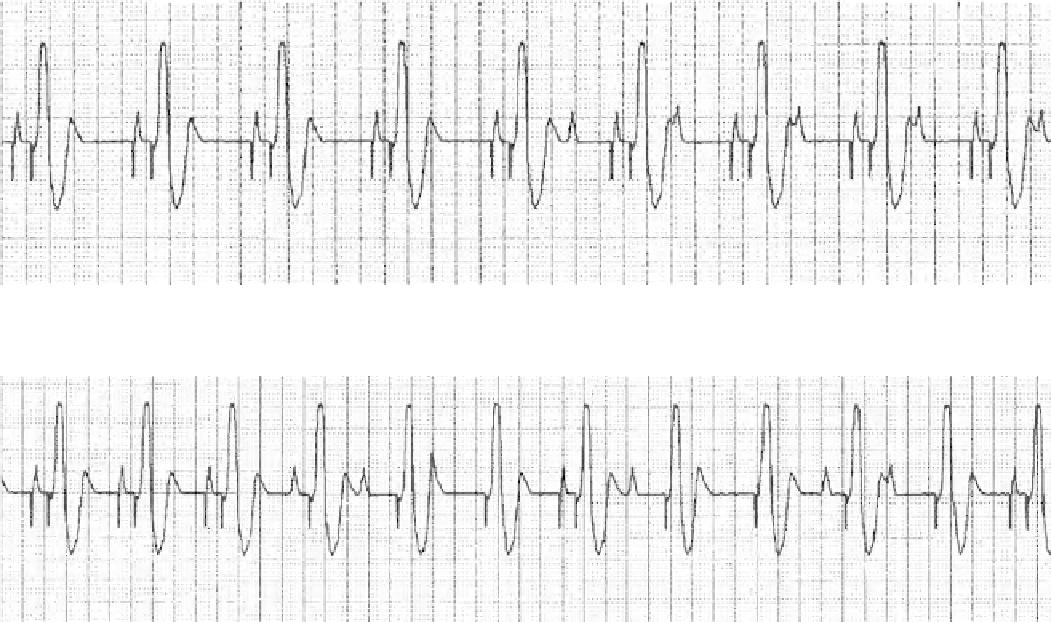Biomedical Engineering Reference
In-Depth Information
Fig. 5.10
D00(R) mode [32] (© 2012 Boston Scientific Corporation or its affiliates. All rights reserved. Used with permission of Boston Scientific
Corporation)
Fig. 5.11
DDI(R) mode [32] (© 2012 Boston Scientific Corporation or its affiliates. All rights reserved. Used with permission of Boston Scientific
Corporation)
Fig. 5.12
DDD(R) mode [32] (© 2012 Boston Scientific Corporation or its affiliates. All rights reserved. Used with permission of Boston
Scienti fi c Corporation)
delay (Fig.
5.10
). Intrinsic events would neither inhibit nor
trigger pacing in either chamber. The D00 mode is directly
programmable and is the magnet mode of the corresponding
dual-chamber modes, except for V00, which is the magnet
mode for the VDD mode. The D00 mode may be used intra-
operatively to reduce the likelihood of inhibition during
electrocautery [ 32 ] . This mode is not a tracking mode.
A sensed P wave will inhibit the atrial pace but will not
start the AV delay [32]. Therefore, this mode is not a track-
ing mode.
5.11
DDD(R) Mode
In the absence of sensed P and R waves, pacing pulses
will be delivered to the atrium and the ventricle at the LRL
(DDD) or at the sensor-indicated rate (DDD[R]); pulses are
separated by the programmed AV delay interval (Fig.
5.12
).
A sensed P wave will inhibit an atrial pace and start the AV
delay. At the end of the AV delay, a ventricular pace will be
delivered unless it is inhibited by a sensed R wave [32]. This
mode is a tracking mode.
5.10
DDI(R) Mode
In the absence of sensed P and R waves, pacing pulses will
be delivered to the atrium and the ventricle at the LRL
(DDI) or at the sensor-indicated rate (DDI[R]); pulses are
separated by the programmed AV delay interval (Fig.
5.11
).




